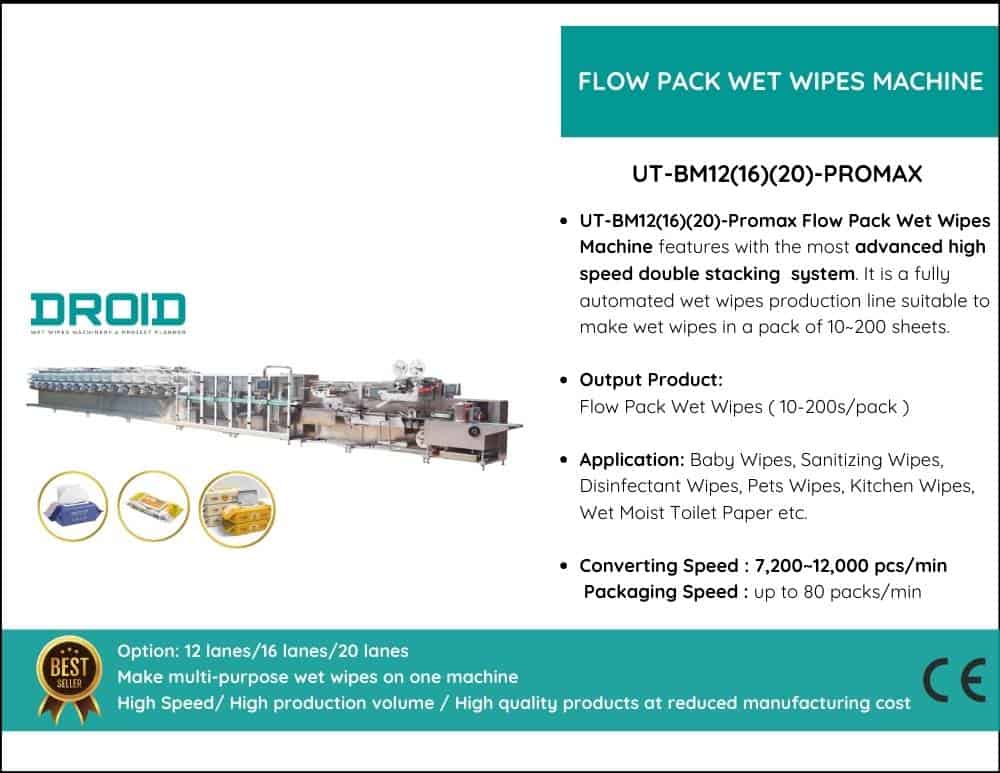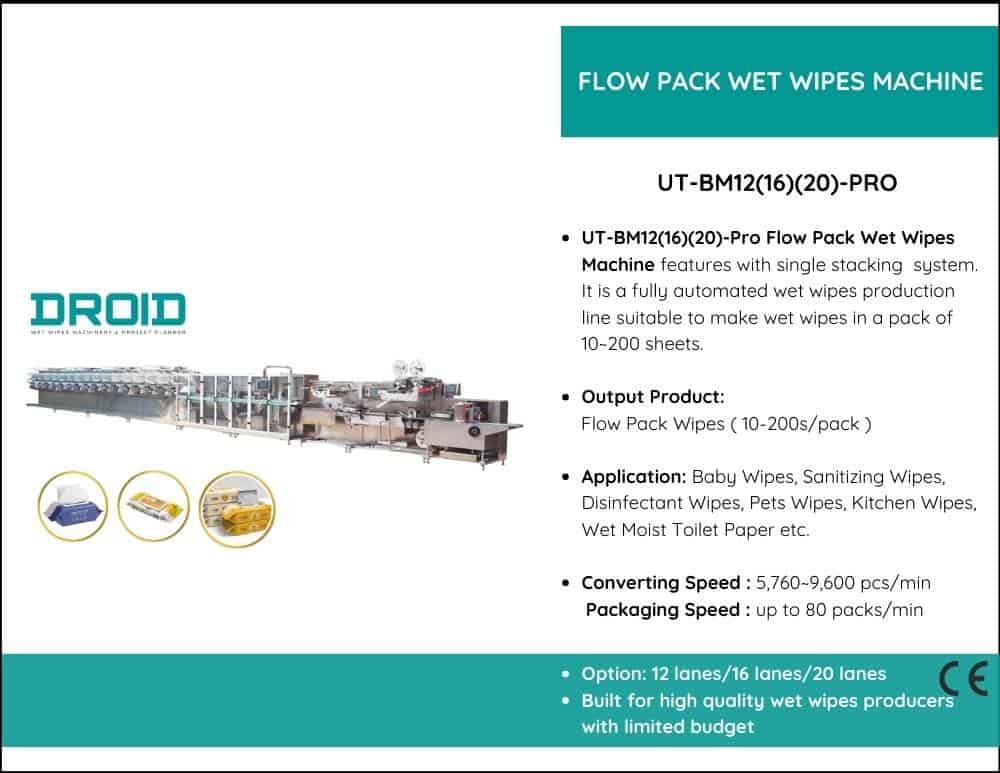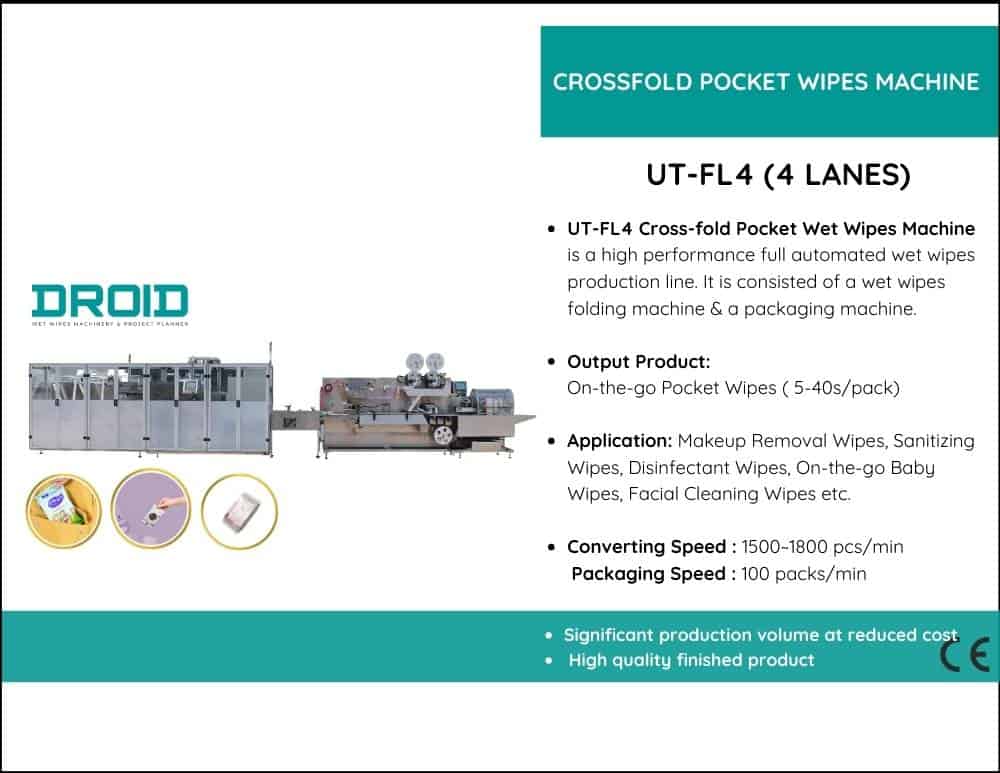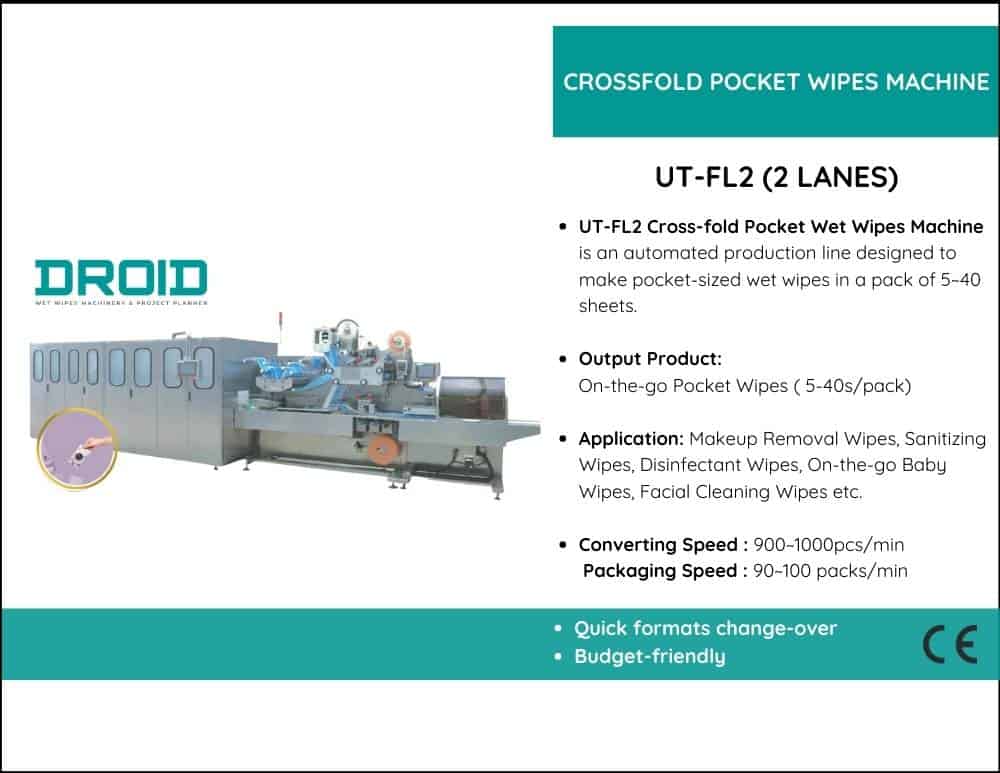Compact wet wipes machines are quickly becoming the manufacturing of the future since they can solve important problems that modern companies encounter. These devices stand out as a solution that strikes a compromise between high performance and space optimization as companies aim for increased efficiency, flexibility, and sustainability. In a time when production settings are ever more competitive and dynamic, their sophisticated features and adaptability make them essential tools.
Compact machines’ ability to save space is one of the main factors influencing the future. Wet wipes manufacturers are under pressure to make their facilities as useful as possible due to urbanization and the growing cost of industrial real estate. Compact wet wipes machines are perfect for organizations that operate in limited locations since they are designed to do numerous jobs in a compact footprint. These devices allow producers to maximize every square meter by integrating tasks like folding, cutting, wetting, and packing into a single unit, doing away with the need for big, spreading manufacturing lines.
Another factor propelling compact devices’ continued importance is their adaptability. Customization and product variety are more in demand than ever in today’s markets. Customers are searching for goods that are suited to certain requirements, such high-end skincare formulas, travel-friendly packaging, or biodegradable wet wipes. Compact machines, which provide modular designs that can be modified to create a broad variety of items, enable producers to swiftly respond to these needs. This flexibility helps small and medium-sized businesses (SMEs) penetrate specialty industries without needing a large investment, in addition to increasing competitiveness.
Another element driving compact wet wipes machines to the forefront of the market is their cost-effectiveness. By using less energy, using fewer people, and making maintenance easier, these devices save operating expenses. Because to its efficient design, less waste is produced, guaranteeing accurate material use and reliable product quality. In a world where companies must contend with growing labor, energy, and raw material prices, this efficiency is particularly crucial. Compact machines boost sustainability and profitability by allowing producers to make more with less.
The allure of compact wet wipes machines is further increased by technological developments in automation and smart production. These devices, which have Internet of Things characteristics, provide data-driven insights, predictive maintenance, and real-time monitoring. These characteristics help firms maintain consistent production schedules by lowering downtime and increasing operational efficiency. Compact machines provide the performance required to fulfill the demands of an industry where dependability and consistency are critical.
The significance of compact wet wipes machines is further highlighted by the increased emphasis on sustainability and environmentally friendly methods. These devices are often made to decrease waste during manufacturing and function flawlessly with biodegradable materials. They are a popular option for producers who care about the environment because of their energy-efficient technologies, which support international initiatives to lower carbon footprints. Compact machines provide the means to mass-produce environmentally friendly wet wipes as customer demand for sustainable goods keeps growing.
Furthermore, scalability and flexibility are made possible by compact wet wipes machines, which are critical in a market that is always evolving. Compact machines provide rapid modifications and smooth transitions, whether a company is growing its product line, breaking into a new market, or meeting seasonal demand. They are perfect for companies that need to be flexible and quick to seize opportunities because of their ease of installation and portability.
Lastly, little wet wipers are solutions that will last and enable the incorporation of new technology. Compact machines are being created to support the ongoing advancements in machine learning, sophisticated robotics, and artificial intelligence. This guarantees that producers will be able to remain ahead of market developments and have a competitive advantage in the years to come.
In conclusion, since they meet the fundamental requirements of sustainability, cost-effectiveness, adaptability, and space efficiency, compact wet wipes machines are a representation of the manufacturing of the future. They are a crucial investment for firms hoping to prosper in a sector that is changing quickly because of their capacity to incorporate cutting-edge technology, adjust to a variety of market needs, and promote environmentally responsible practices. Compact machines are positioned to take the lead in improving manufacturing processes as companies place a higher priority on innovation and agility.










